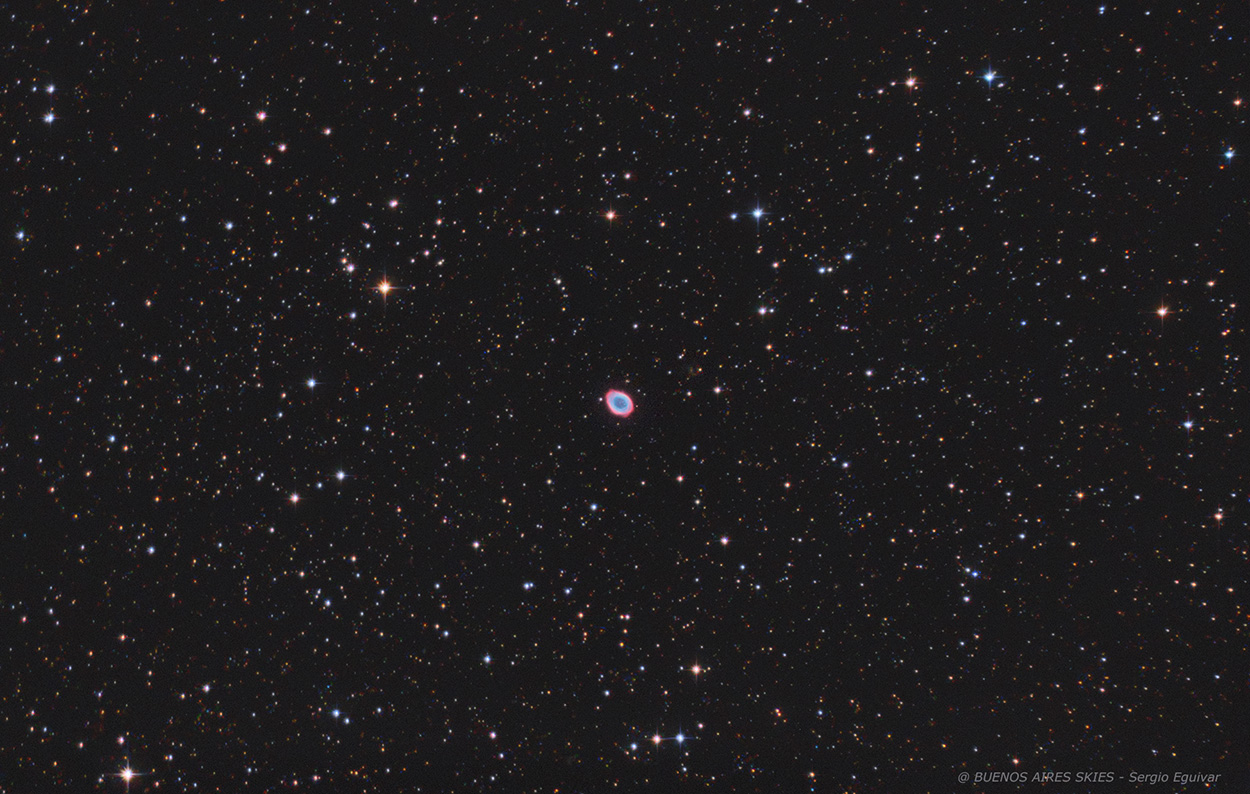
0222222222222222222222222222222222222222222222222222222.
| HOME |
MESSIER 57 (AKA THE RING NEBULA)
STARS IN SCORPIUS
(Image centered at: ra 18 h: 54 m / dec + 33º 02')
CLICK THE IMAGE FOR A HIGH RESOLUTION VIEW
June 2025, Home Backyard in Martinez, Buenos Aires, Argentina
DATA
TYPE: Planetary Nebula
APPARENT DIAMETER: 2.5 arc minutes
APPARENT MAGNITUDE (V): 9
DISTANCE: 2.300 light years
IMAGE INFORMATION
INSTRUMENT: 6" ORION OPTICS UK (Ultra Grade Optics) w/Sky Watcher Coma Corrector (0.9x) working at at f4.5
CAMERA: QHY 183 MONO
MOUNT: VIXEN GDPX, OAG with Starlight Xpress Lodestar
FILTERS: OPTOLONG LRGB Set ANTLIA Filters
SKY CONDITIONS: urban skies - Bortle 8
EXPOSURES: HARGB (30,15,15,15)
OBJECT DESCRIPTION AND IMAGE SESSION
This is more like an statistical image. There was a bit more than one hour to image the path of Messier 57 from my home backyard. The telescope was almost in an horizontal position. Guiding was above the image resolution and I believe the primary mirror tilted due the stars shape that came out on the raw files.
Messier 57 (NGC 6720) is often regarded as the prototype of a planetary nebula, and a showpiece in the northern hemisphere summer sky. M57 was the second planetary nebula to be discovered by Charles Messier on January 31, 1779, 15 years after the first one, M27. M57 is very easy to locate as it is situated between Beta and Gamma Lyrae, at about one-third the distance from Beta to Gamma. It can be seen with binoculars as an almost stellar object, difficult to identify just because of its small apparent diameter. In smaller amateur telescopes, the ring becomes apparent at about 100 magnification, with a darker middle; a 12th-mag star is east of the planetary nebula, about 1' of the center.